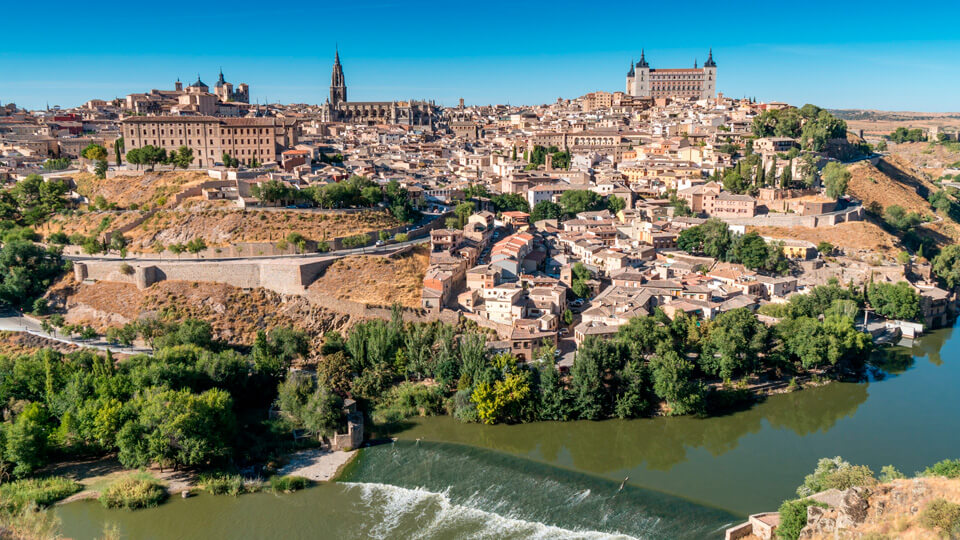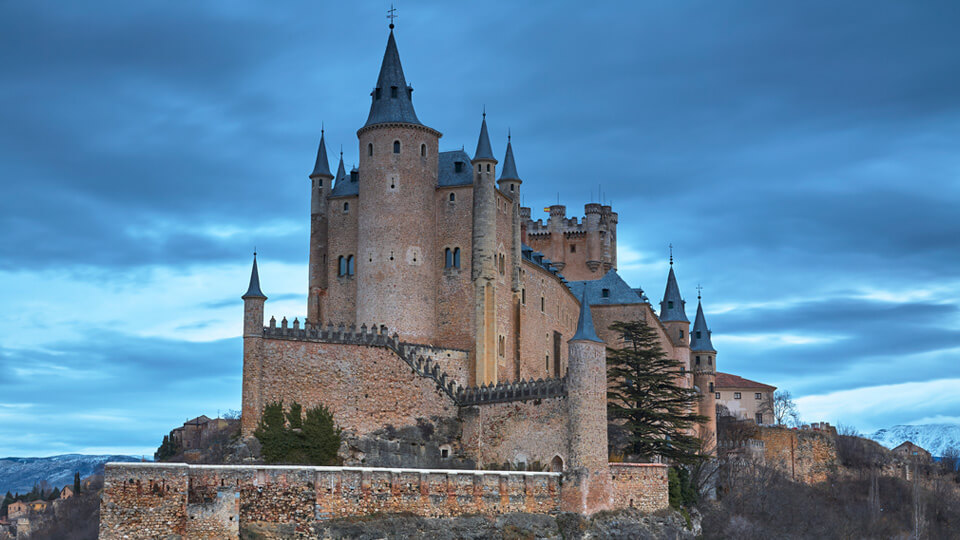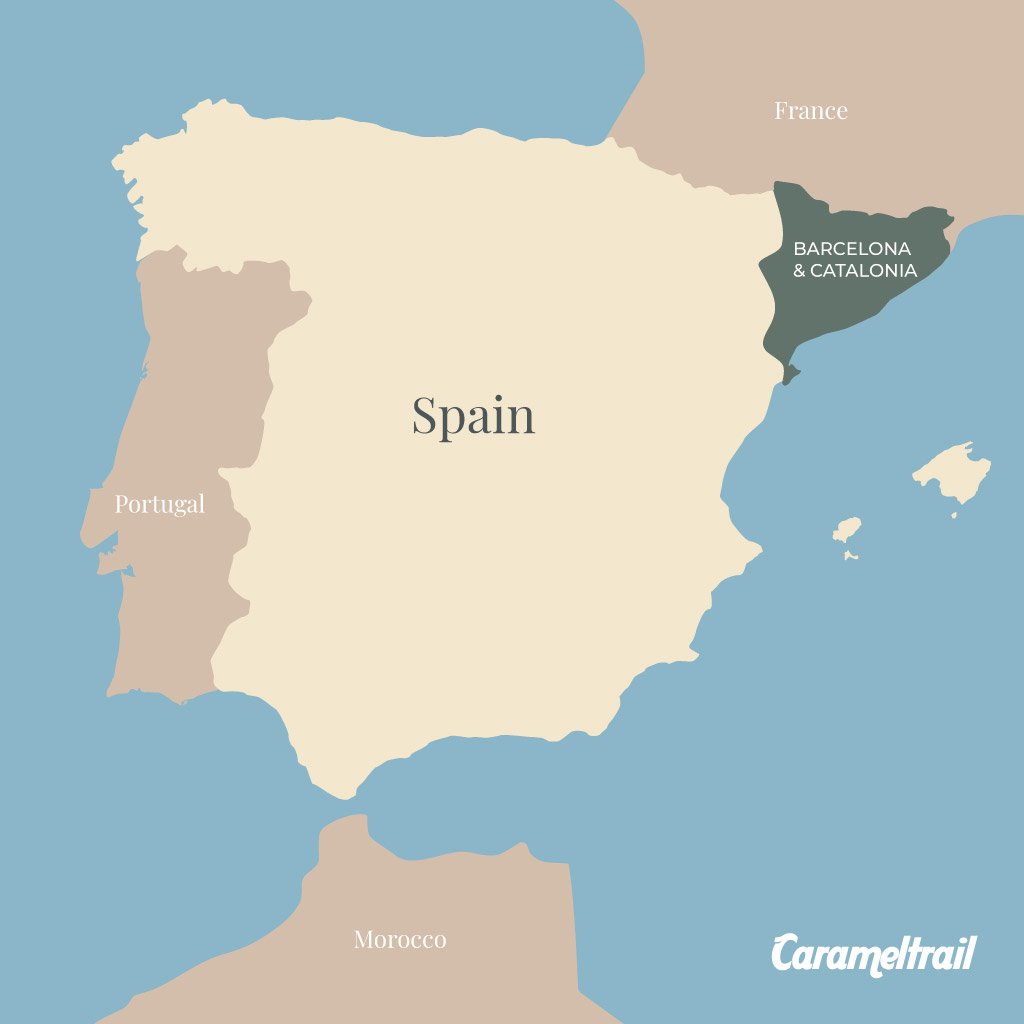
Girona Spain and The medieval town of Besalu
While Spain’s southern and eastern coasts is popular with tourists and expats, there are many other hidden gems in many parts of Spain. Throughout all the regions of Spain, there are countless villages of immense beauty that ooze both charm and history.
This tour is a very good option if you want to see some nice Catalan medieval villages and a little bit of history. Luckily, the Spanish geography keeps many memories of the Middle Ages with its towns. These stand out for their impressive castles or the great walled enclosures or their beautiful cathedrals and monasteries.
MEDIEVAL TOWNS IN CATALONIA SPAIN
Barcelona is so wonderful, but there is a lot more to discover outside the city, especially in the wonderful medieval towns in Catalonia.
According to Devour Barcelona, these are the most beautiful medieval villages in Catalonia:
Most of these medieval towns from Spain can be reached by car, because they are planted in the middle of the beautiful Catalan countryside. Besides, each can be fit into a day, so don’t doubt taking a day out to visit any of them!
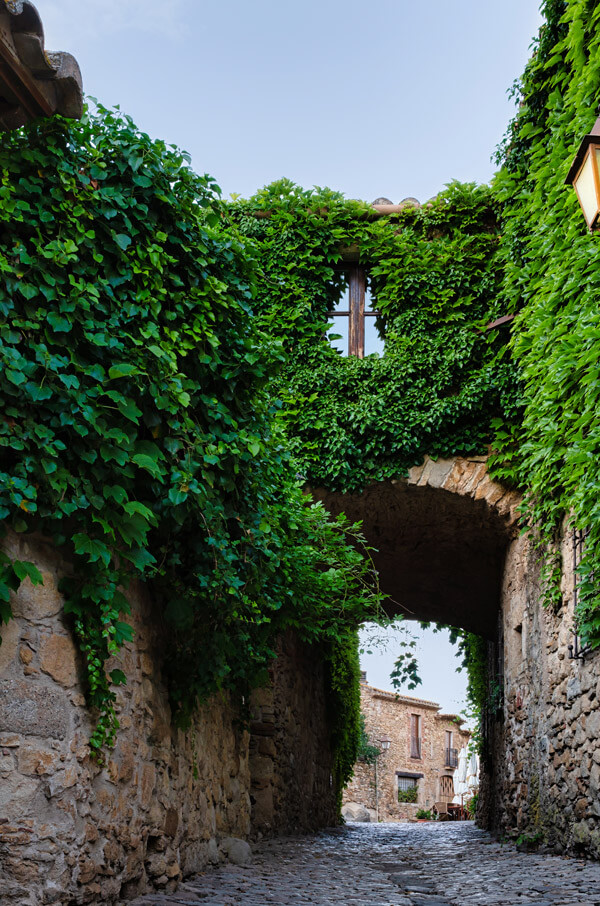
HOW TO GET FROM BARCELONA TO GIRONA BY TRAIN
Where is Girona?
Girona is a medieval city in Spain’s northeastern Catalonia region, at about 100 km away from Barcelona. So often people make a trip to escape the crowds of the big city and it’s an especially popular pit stop for people traveling up to the scenic coastal region of Costa Brava. Girona is well-known because it has historic architecture and some well-preserved Jewish quarters.
You should consider the fact that there are no direct flights from Barcelona to Girona, so the options you have are getting there by train, by bus, or by driving.
The high-speed AVE train
Nevertheless, the cheapest, fastest, and the way we recommend to get to Girona is the high-speed AVE train (the standard price for this is about $16). Besides, you can reserve a seat up to 90 days in advance.
Spain has the AVE trains and many people here use this transportation as they are good speed trains, which means it takes less to get from one point to another. Consequently, it takes around 37 minutes to get from Barcelona to Girona’s main station.
Make sure you’re getting the AVE, because Renfe operates another train (Viajeros) that also goes to Girona, but takes 1 hour and 20 minutes.
KNOW THE MEDIEVAL SPAIN IN GIRONA: A CITY BETWEEN PAST, PRESENT AND FUTURE
Nicknamed the City of a Thousand Sieges (due to all the invasions the city withstood), Girona is often passed over by travelers set on Barcelona or the coastal beaches.
Girona sits on the banks of the Onyar river, and is divided into an old and a new town area. The old town offers charm and history, while the new one shows cosmopolitan dining and shopping.
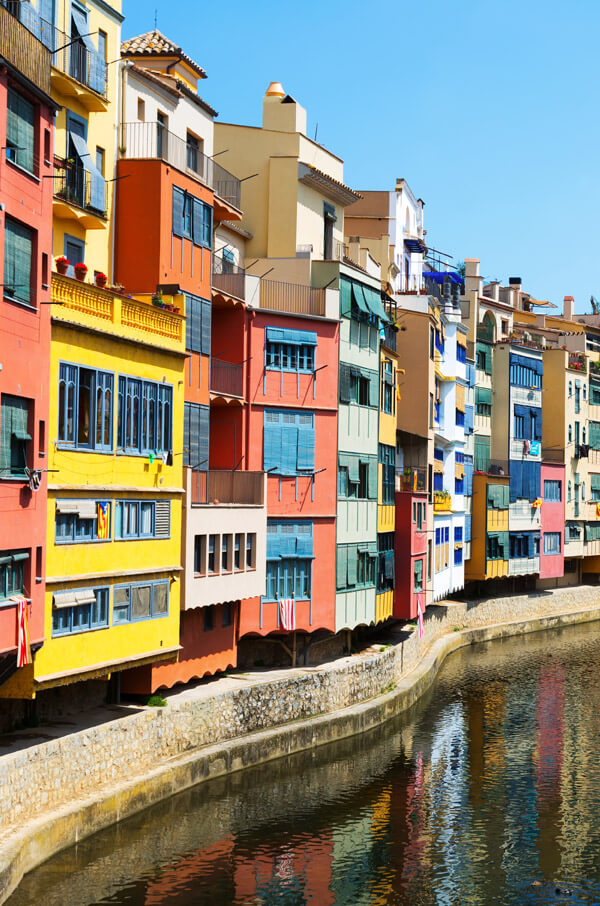
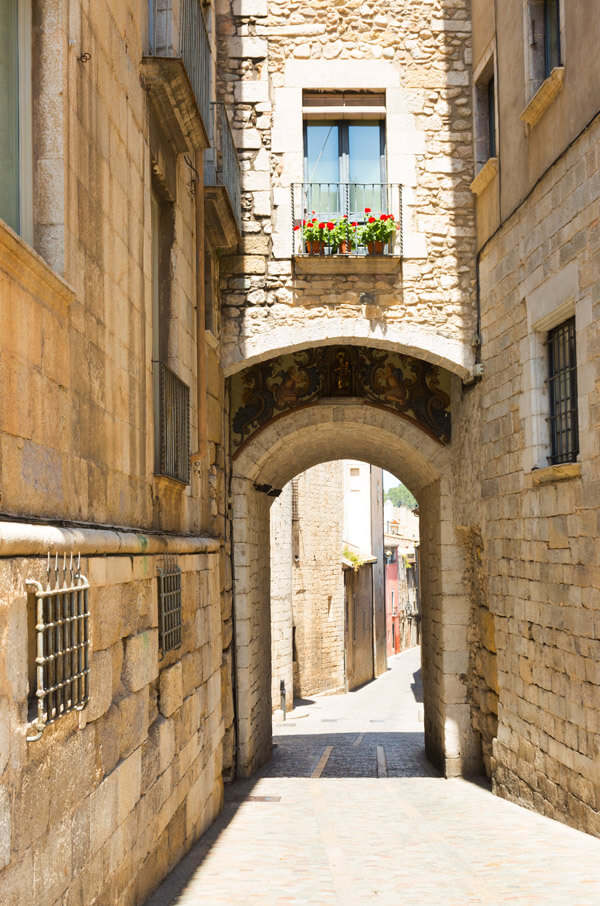
Girona has a charm that wins one’s heart
The Barri Vell – Girona’s historical center – with its tiny streets climbing up the hill, is enchanting and holds in the main ancient monuments. There’s nothing better than wandering around, enjoying every corner, discovering unusual perspectives of the narrow alleys.
Girona is a city that can easily be explored by foot and the Old Quarter (which is also known as the Golden Triangle) is the best spot to start your journey through time.
SEE THE ROMANESQUE AND GOTHICS STYLE BUILDINGS FROM GIRONA
Girona is famous due to its medieval history being one of the numerous medieval cities in Costa Brava. But Girona has a rich Roman past too. The Força Vella Fortress placed in the city has been built by the Romans in the first century BC. Besides, this construction remained unchanged until the year 1.000, and a visit there will help you see parts of the old fortress.
The other fortified part of Girona is the Medieval Quarter. This part was an extension of the Roman walls during the 14th and 15th centuries. With newer ramparts, you can see sections of them as you wander along the city’s walled walkways.
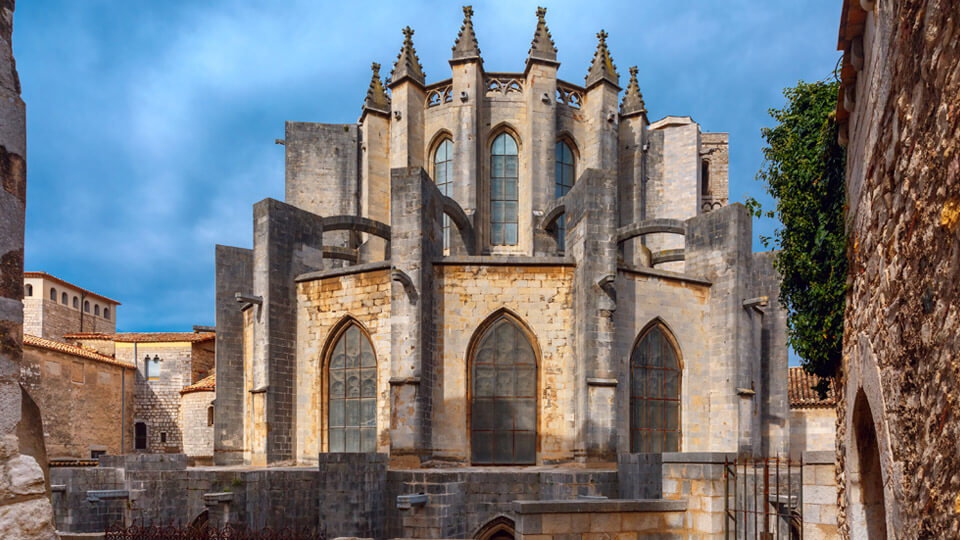
Right in the heart of the Força Vella you will find Girona’s Cathedral. It has been built between the 11th and 18th centuries and this cathedral is different because here you can see many different artistic styles. Starting with the Romanesque tower and ending with its baroque façade, The Cathedral from Girona is a pass through the ages.
When you get to Força Vella, you will find a labyrinth of narrow streets that will take you to the Jewish Quarter from Girona. These small streets have been home to Jews between the 9th and the 15th centuries. Due to the fact that it preserves its medieval atmosphere, this part of the city is one of the best-preserved Jewish Quarters in the world, which makes Girona´s culture very important in the worlds map.
Don´t be surprised if you find some staircases that will get you to the highest part of the city to enjoy the old city panoramas. For centuries, the city of Girona has extended heading the river, so a walk here across the water will get you to the contemporary side of this marvelous city.
Enjoy the Jewish Quarter and Girona from Casa Cundaro
Casa Cundaro from Girona is the only Jewish House made for tourist accommodation. Located in the historical center of Girona, set in a traditional Jewish house, it features rooms and apartments with balconies. The Cundaro House is built around an attractive, interior garden.
Past, present and future join hands in this magnificent house full of history, magic and well-being.
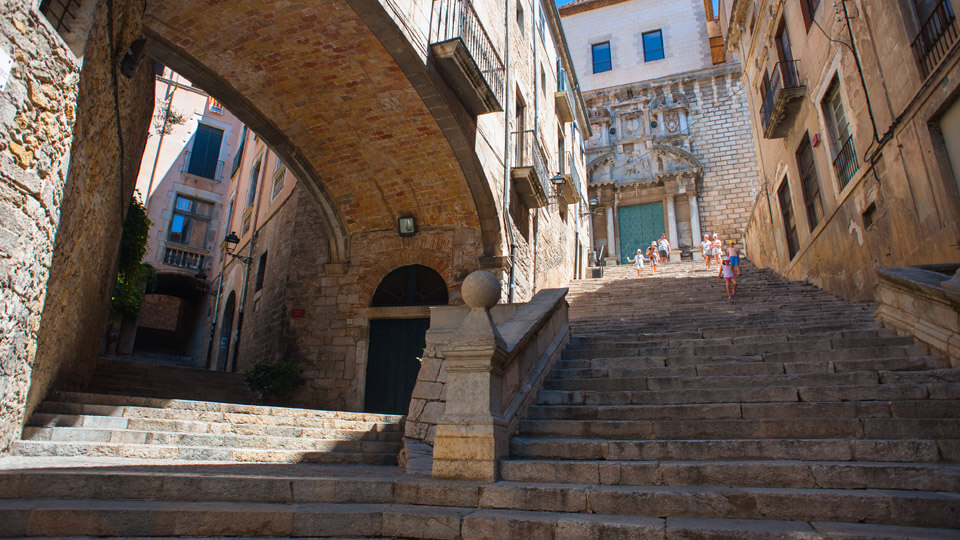
GAME OF THRONES TOUR IN GIRONA, SPAIN
Girona was chosen from among many other international candidates for the great conservation of its historical heritage and has become one of the privileged locations to host one of the most expensive series in the history of television: Game of Thrones.
In season six, viewers of the Game of Thrones series were transported to Girona’s medieval old town and this served as the major setting for the city of Braavos, where a blind Arya Stark was begging on the streets and was attacked by the orphan.
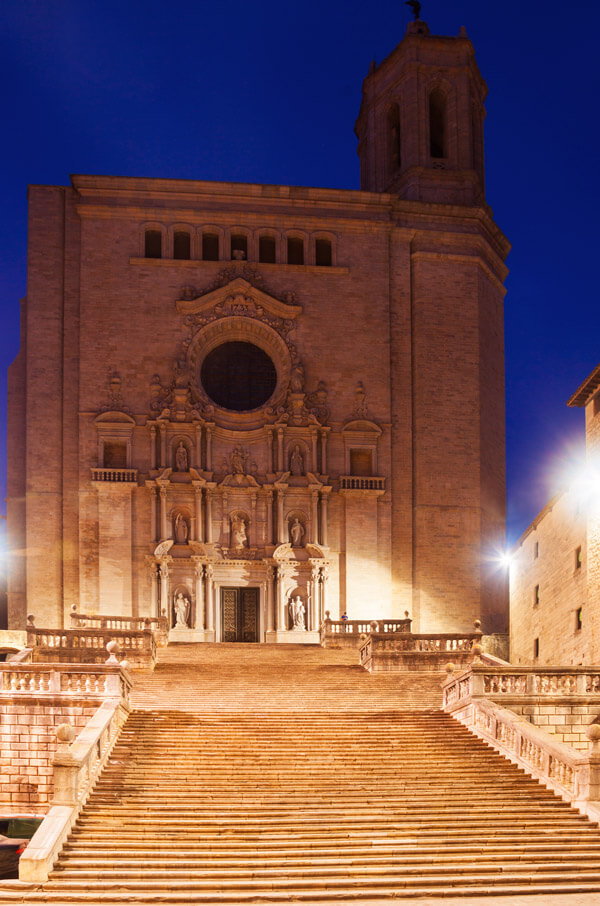
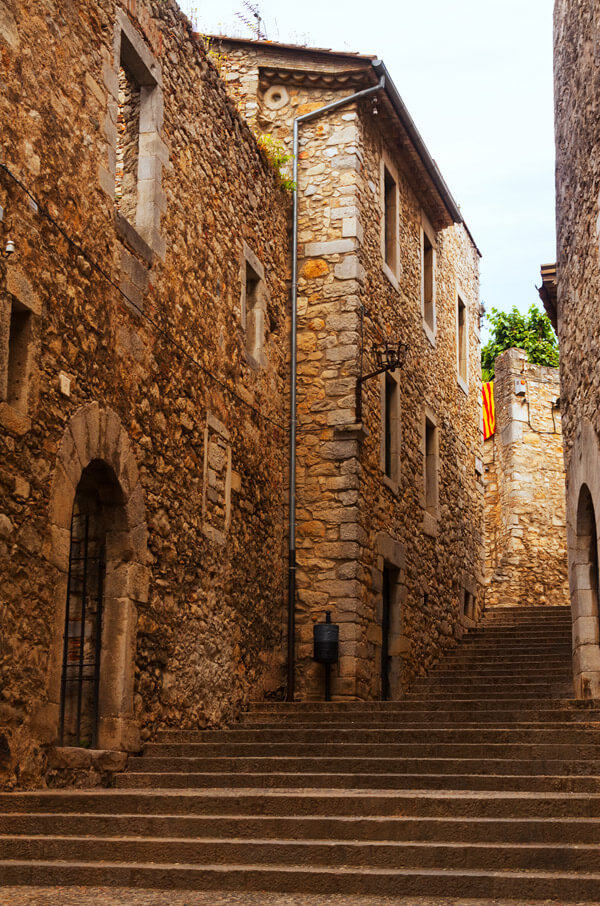
You can easily tour all of Game of Thrones Girona locations in a couple of hours or so. Guided by an expert, this tour will take your knowledge of the series to another level
FROM BARCELONA TO BESALU: BEST ROUTE
How to get to Besalu?
The fastest way to travel to Besalu from Barcelona is by train, which requires on average 55 min of travel time. The distance is about 62 miles (100 km) from Barcelona to Besalu.
Cost of the journey
Before traveling from Barcelona to Besalu, it’s good to know what ticket you can purchase and how much it will cost. A train ticket for this journey costs on average $27 (€22) one way.
Online booking
But we recommend booking Barcelona to Besalu tickets online a few months before your planned travel date to score the best deals and save money on your trip.
BESALU DELVES YOU INTO MEDIEVAL TIMES
Besalu is a medieval town emerging charm, history and character. The wealth of the city can be seen in its Romanesque structures that are very elegant and beautiful.
Located at the bottom of the foothills of the Pyrenees from the Garrotxa region, the small town of Besalu is among Catalonia’s most stunning medieval sites. This city is famous for its impressive Romanesque bridge and for the vestiges of its Jewish past. This historic importance makes Besalu a perfect day-trip destination where you can easily get to from Girona or from Barcelona.
Besides, here you can find traces of settlements since the Roman era. An interesting fact is that the name Besalu itself may come from the Latin ‘bisuldunum’, which means ‘fort on a mountain between two rivers’ and this word makes reference to an ancient castle that was here back in the 10th century.
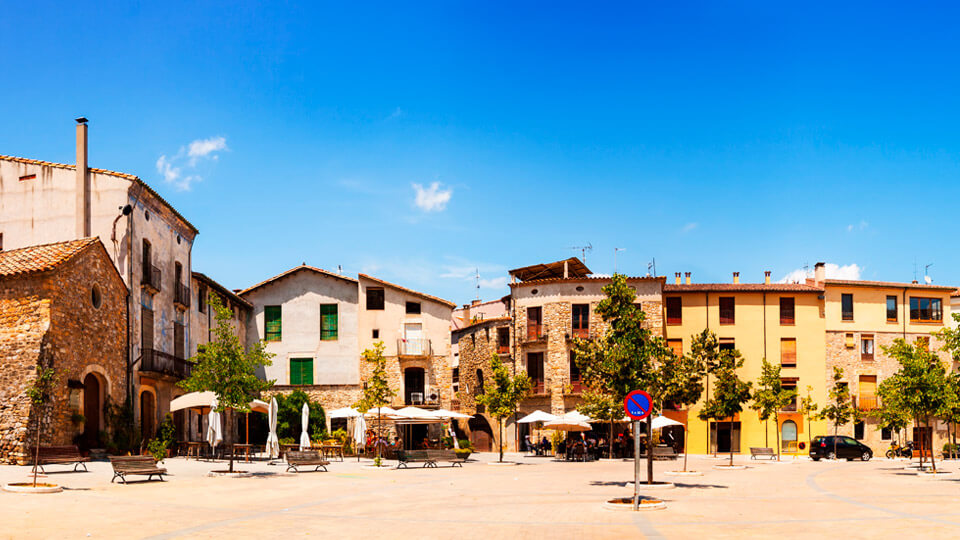
THE BESALU’S BRIDGE
The most emblematic of Besalu’s qualities is the large Romanesque bridge which guards the entrance to the old town. Supported by seven arcs and two towers, the bridge is very well preserved and a good example of Medieval architecture, although there has been a bridge there since the time of the first Roman settlements on the shores of the river Fluvià.
In the part of the town nearest to the bridge there are many narrow streets that belong to the ancient Jewish quarter. Here you will find the Miqvé, the purification baths, which date from c. XII, and demonstrate the presence of an important Jewish community.
The Romanesque bridge (widely known as “The Bridge of Besalu“) is a building that dates from the XIth or XIIth Century and has undergone several restorations over its history.
The current bridge is the result of several reconstructions and renovations made over the centuries. In 1939, during the Spanish civil war, two arches where destroyed and then in the 60s, it was reconstructed based on texts and illustrations on how it was originally.
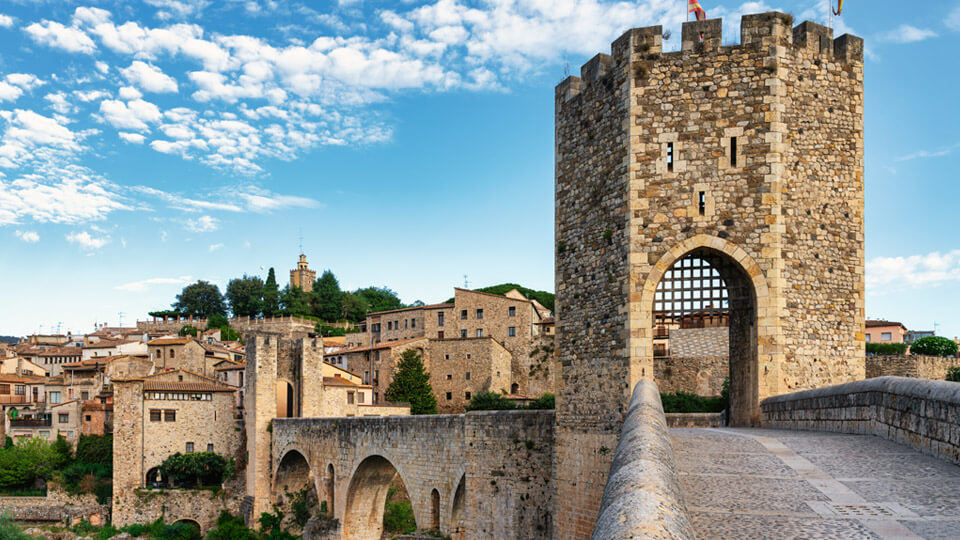
Girona, Besalu, Figueres, river Fluvia, Game of Thrones, Casa Cundaro… all these medieval, Romanesque and gothic places are part of Catalonia´s enchantment. Let yourself captivated by the beauty and the fascination these corners can bring and let us be part of the magic as you discover them. At Carameltrail we would be delighted to show you all of them. See you very soon!


